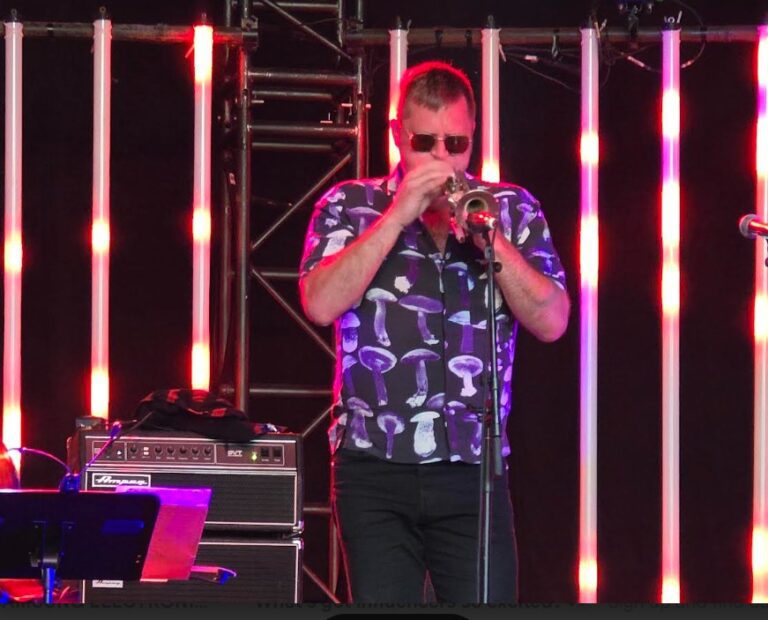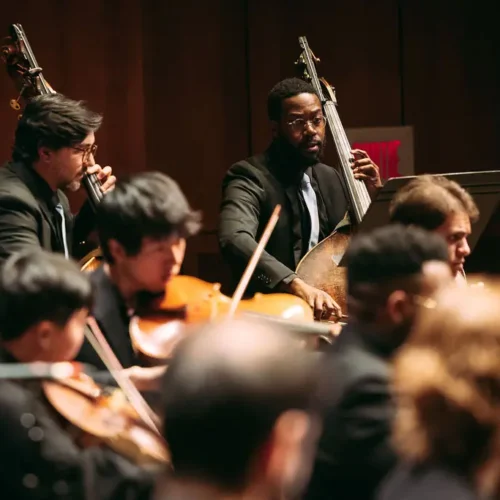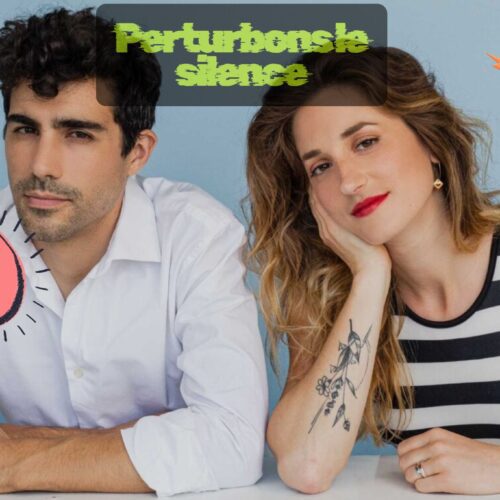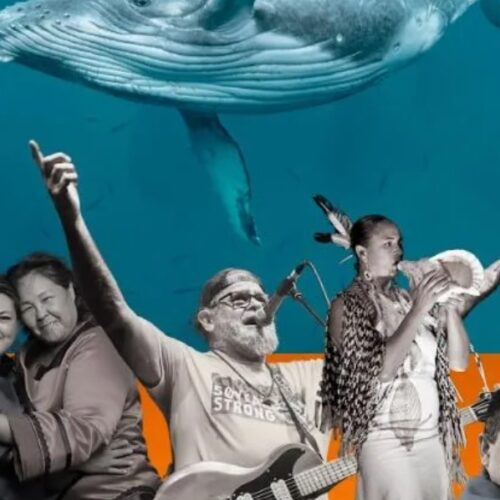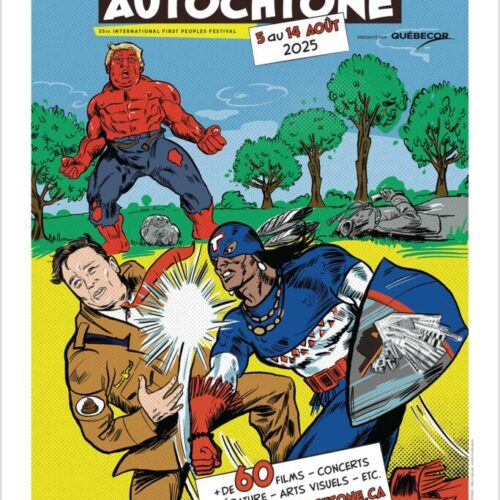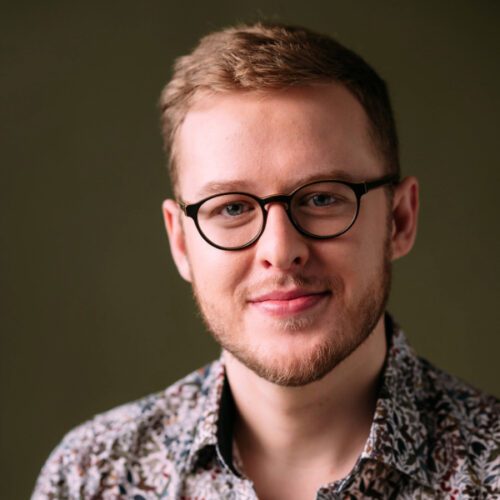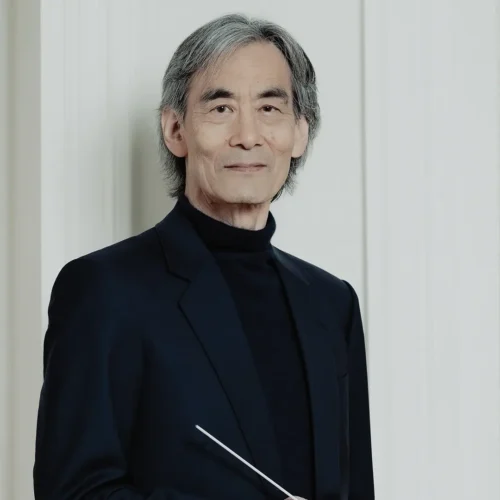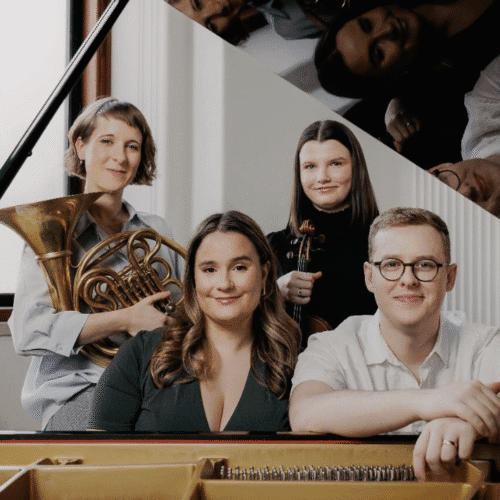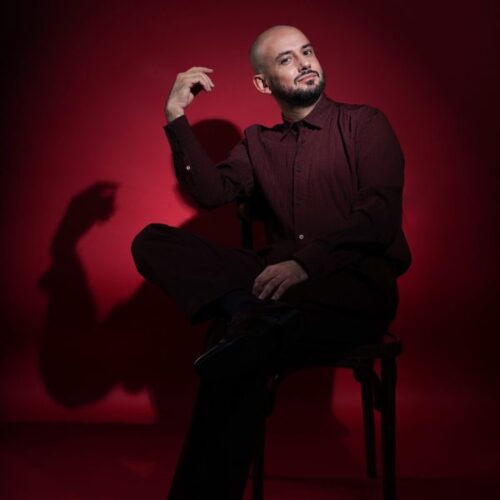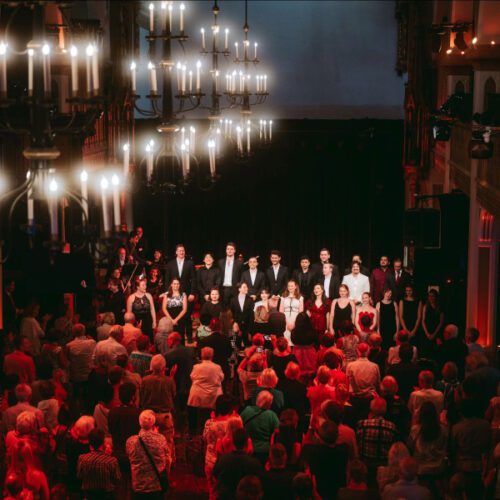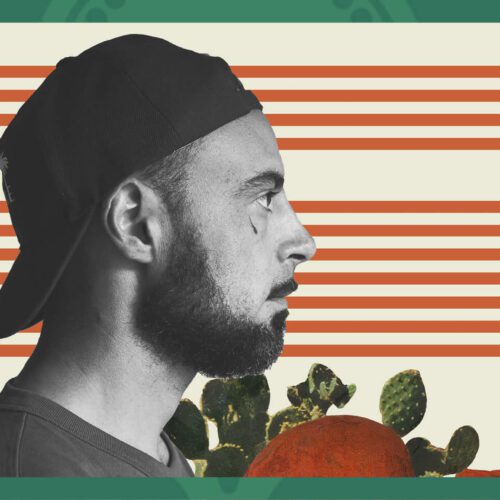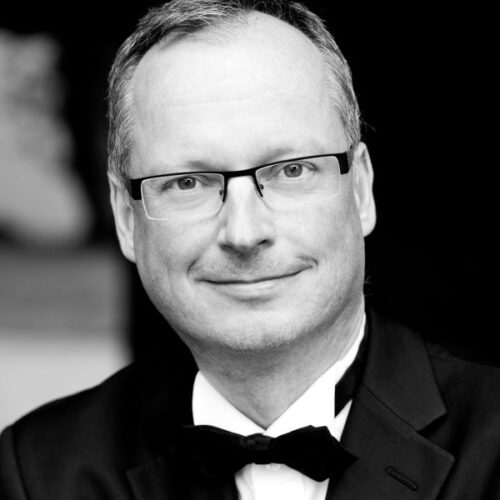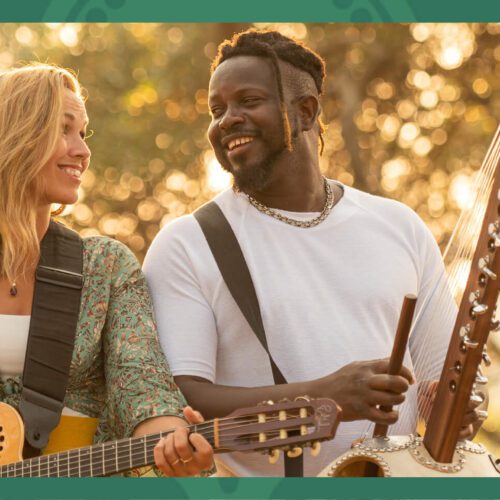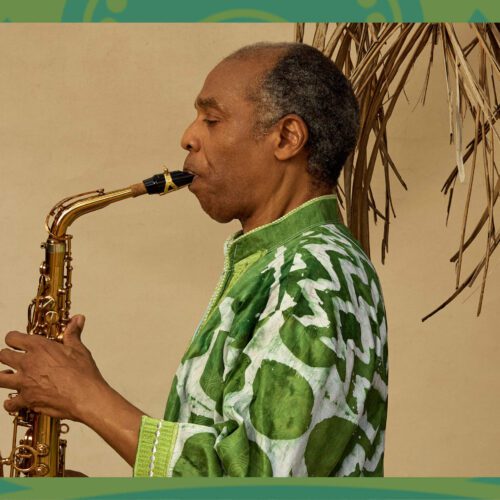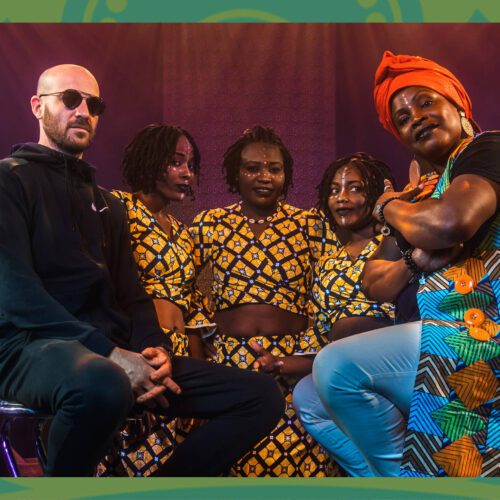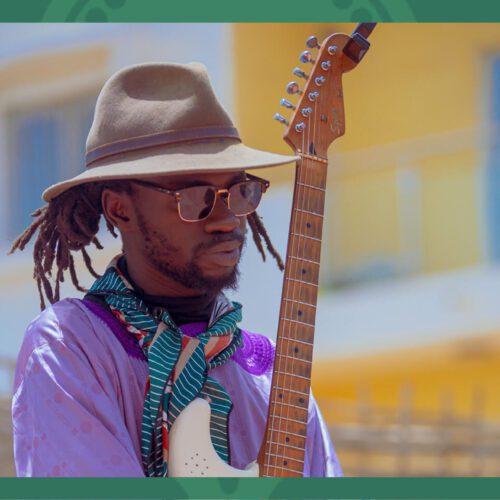Additional Information
Peter Evans, 43, is among the elite of trumpet players of this era without a doubt. His phenomenal skills, achievements and technical innovations are acknowledged by musicians, musicologists, connaisseurs…. but not by a large jazz audience that must know him now ! Invited to perform at the MTL Jazz Fest on June 26, he offered a tremendous free double set at Molson Pub stage with his bandmates – Joel Ross on vibes, Nick Jozwiak on bass and the great Calvin Weston on drums as a special guest. PAN M 360 could meet him after the soundcheck.
His bio profile tells us that he graduated from The Oberlin Conservatory of Music, he also studied at the New England Conservatory of Music’s School of Preparatory Education. He has led the Peter Evans Quintet with Ron Stabinsky, Sam Pluta, Tom Blancarte, and Jim Black, the Zebulon trio with John Hebert and Kassa Overall, and was a member of the band Mostly Other People Do the Killing. He has worked with Peter Brötzmann, Mary Halvorson, Okkyung Lee, Evan Parker, Matana Roberts, Tyshawn Sorey, Dave Taylor, Weasel Walter, and John Zorn.
PAN M 360: Peter Evans, it’s great to meet you in Montreal!
Peter Evans: Pleasure !
PAN M 360: Your exceptional trumpet playing is not only from a classical approach, there’s things that have been achieved while and after your musical training. You definitely found your way, through virtuosity and innovation. Many aficionados are also applauding your so called extended techniques.
Peter Evans: Yeah… So I think it’s a bit of a misunderstanding, but I think the idea that you study an instrument and then you achieve some kind of level of finished mastery or you kind of get it and then you go beyond that, that’s not exactly how it works. So I guess for me the initial pull towards… I also don’t really use the phrase extended techniques, which doesn’t offend me. It’s just more like it’s a way of describing a normal way of playing an instrument.
PAN M 360: It can be a cliché, yeah.
Peter Evans: Well, that too, but I think it also conveys a certain attitude towards an instrument, that there’s a quote-unquote normal way to play it and then there’s extended ways to play it. Yeah, some people are only playing extended techniques and not necessarily mastering their instrument.
I looked at the exploration of different sounds as literally an extension of the kind of sonic palette of the instrument. So it includes everything and I’m adding to it. And then it’s maybe more of an electronic music way of thinking about combining sounds.
So for me all the different ways of approaching the instrument are actually fundamentally connected. I don’t really look at it as like… Everything grows out of the basic technique on the trumpet. And what got me into doing some of this stuff really initially was two different kinds of streams.
PAN M 360: What are those streams ?
Peter Evans: One was contemporary classical music from Europe, from Ligeti to Xenakis to Lachenmann. So I was playing chamber music by all these composers and I got kind of used to the idea of that. Not so much for the trumpet, not so much because of the trumpet parts, but just being in that environment, you know?
And then while I was getting into that stuff, kind of completely separately, I found out about the world of free jazz and improvised music. And so people all going back to post-Coltrane saxophone players like Albert Ayler and Pharoah Sanders. And then I got way into people like Evan Parker and John Butcher and the whole British improv scene and the whole European, Willem Breuker, all these people. So this is when I was like 19, 20. I got really excited about that.
That kind of gave me the license or the freedom to start exploring on my own and developing a personal… At that time, for me, the whole point of what I was perceiving from these other older artists was that people were developing their own unique vocabulary. So it was a little bit almost like scientific research. You don’t want your research overlapping with somebody else’s.
So even in the early 2000s, there were quite a few really interesting trumpet players that I didn’t really know until I moved to New York. And even people in Berlin, like Axel Dörner or Franz Hautzinger in Austria, Nate Woolley, etc. We’re not all the same age or generation, sometimes 15 years separate.
Axel was doing stuff for a long time, but I think what I noticed is that everybody was doing their own thing. None of us were doing the same stuff. And even when I think about players that I met later, like Ambrose Akinmusire, he doesn’t extended techniques, but it’s more of the attitude towards the instrument. And so I think what’s interesting about the trumpet is that unlike a lot of other instruments, the interface is so personal that it’s very difficult to copy people, even if you wanted to.
So that these different people that are kind of moving the instrument into a more individualized space.
And so I think getting into this approach of exploring different techniques was more of a window into a more general attitude towards sound and towards the instrument as having an orchestral or electronic kind of capability to be malleable and to be adaptable to different situations, which is how I look at it now. Like, you know, in this band, I don’t think about the extended technique stuff really that much at all. It’s more I’m blending.
I’m using what I have to blend and contrast with the other instruments. There’s no plan about that. It happens.
PAN M 360: Yeah. Yeah. Also, when we look about the evolution of an acoustic instrument now in 2025, you know, the textural approach has some limits with the traditional instruments. And now if we think electronically, the textural approach is endless. But… Even acoustic instruments have been explored a lot and there’s still something to find that is not found. So what are your tools to enlarge your textural and sonic possibilities ? Electronic ?
Peter Evans: Well, I don’t even really use electronics that much. Pedals? Not really. I mean, a lot of the sound, I guess the explorations of timbre, for me, that just came out of working with the instrument and working with the microphone. Yeah, so it’s just more of an attitude and more of a way of looking at the sound. And I definitely use the microphone and the PA system and that’s always a conversation with the sound guys because they don’t necessarily understand that what I’m doing. People don’t necessarily understand that approach, this approach that you’re talking about to an acoustic instrument. But, yeah, with me, a lot of it has come through working with a microphone and PA system, subwoofers, just that much.
PAN M 360: Yeah, the relationship between the mic and the PA system is a sort of point of achievement, of advancement for the textual approach. So, the mic is an instrument for you and also the mixing table too.
Peter Evans: yeah, exactly.
PAN M 360: Can you just pinpoint some stages of your own evolution when it happened?
Peter Evans: When I first started performing solo concerts, part of it was to challenge myself to see if I could sustain a musical line with the things that I was… While I was beginning to do that, that was at the same time that I was really actively trying to explore these different techniques, different sounds. And when I moved to New York in 2003, that was a… That first, you know, maybe five years that I was there, that’s where I learned, you know, I played in a lot of different situations. I played in basement clubs. I played in rock spaces and a lot of DIY spaces and stuff. So, I really was forced to learn how to perform with a microphone and how to adapt what I was working on to a more practical context of, like, a show.
So, I think for me, that was a period of real growth. And actually, by forcing myself to play so much… I mean, I remember, actually, I did a tour in Canada. There’s a Calgary drummer named Chris Dadge who has a record label. We connected over MySpace in 2007 and he organized a tour where I shared the bill with him.
And I remember before that period, I wasn’t playing one continuous piece solo. I would do several pieces. So, that tour, I forced myself by the end to play one 30-minute, one 40-minute piece not without any pause, but without any break in the compositional flow.
So, those experiences really helped me grow. And then, I’d gone through periods of growth and atrophy and growth and atrophy. And right now, particularly the solo playing, I’m kind of in a period of growth again where I’m working on developing techniques of variation.
Techniques not really about sound. Now, we’re talking more about rhythms and notes and about techniques of ornamentation where they call it diminution, like in Renaissance music, like the idea that you’re taking something simple and actually slicing it into smaller little units to create a more like a fine texture.
So, that’s kind of where I’m at right now.
